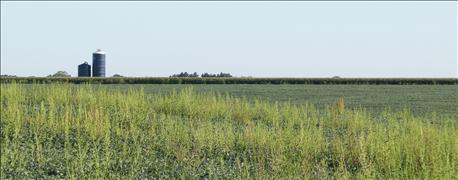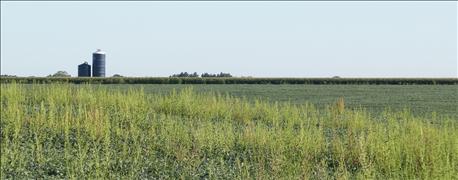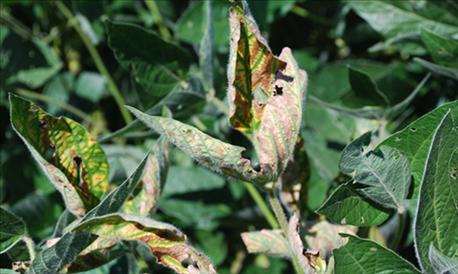
From disease identification to PPO-inhibitor-resistant waterhemp tests, there’s rarely a dull moment at the University of Illinois Plant Clinic. More than 580 waterhemp and Palmer amaranth samples from 10 states arrived at the clinic this year for glyphosate and PPO-inhibitor-resistance testing, says Diane Plewa, plant diagnostic outreach specialist. That represents a 59% increase from the 338 samples analyzed last year.
“This is a service people are really interested in,” says Plewa. “I’m really happy we’re able to offer and provide that information.”
The clinic is also busy testing submitted plant samples for corn and soybean disease diagnosis.

SAMPLES AND MORE SAMPLES: The University of Illinois Plant Clinic is busy analyzing more than 580 waterhemp and Palmer amaranth samples from 10 states for glyphosate and PPO-inhibitor resistance testing, says Diane Plewa, plant diagnostic outreach specialist. (Photo: Angie Peltier, University of Illinois)
New adversaries in corn
Suzanne Bissonnette, assistant dean of agriculture and natural resources at the Department of Crop Sciences, says lab results from tissue samples may not represent statewide disease pressure, but there are a few diseases on the radar this year. There’s even a new threat in cornfields.
Bissonnette says corn leaf samples revealed a new disease: bacterial leaf streak. Bacterial leaf streak is typically found in South Africa, but USDA confirmed reports from Nebraska, Colorado, Illinois, Iowa, Kansas, Texas, Oklahoma, Minnesota and South Dakota. Bacterial leaf streak was confined to DeKalb County in Illinois, Bissonnette says, but given the positive identification in neighboring states, she expects a broader reach in the future.

DON’T BE FOOLED: “There was a lot of talk about sudden death syndrome [SDS] this year, and there was a lot of SDS,” says Suzanne Bissonnette, assistant dean of agriculture and natural resources at the Department of Crop Sciences. “But in the samples that came through the clinic, about half of them were brown stem rot.”
Tar spot appeared in northern Illinois fields again this year. Bissonnette notes they identified the fungus that causes tar spot, but not the second fungus that creates the fish-eye lesions associated with tar spot. The plant clinic, with help from the University of Illinois Extension service, plans to run overwintering tests on tar spot spores. “We’re trying to get a better handle on how tar spot is surviving, arriving and infecting,” she says.
A case of mistaken identity?
Bissonnette says that they’ve seen typical soybean diseases this year. “There was a lot of talk about sudden death syndrome (SDS) this year, and there was a lot of SDS” she says. “But in the samples that came through the clinic, about half of them were brown stem rot.”
Proper identification of disease is important, Bissonnette explains, because farmers can select varieties resistant to brown stem rot and tolerant to SDS. “If the foliage looks like SDS, you have to split the stems open and look,” she says.
Soybean rust made an early appearance in southern Illinois fields this year. While most soybeans in the state are mature and rust won’t impact yield, Bissonnette explains, there are some late-planted soybeans and double-crop soybeans at increased risk.
And there is one unique challenge soybean farmers should watch for next season: stem borer. Bissonnette says that soybean plants with dead stems may appear to have charcoal rot, but farmers should split the plant all the way down to the soil line and look for stem borers for proper diagnosis.
Proper identification of pests and diseases will help with accurate input decisions the following season.
About the Author(s)
You May Also Like




